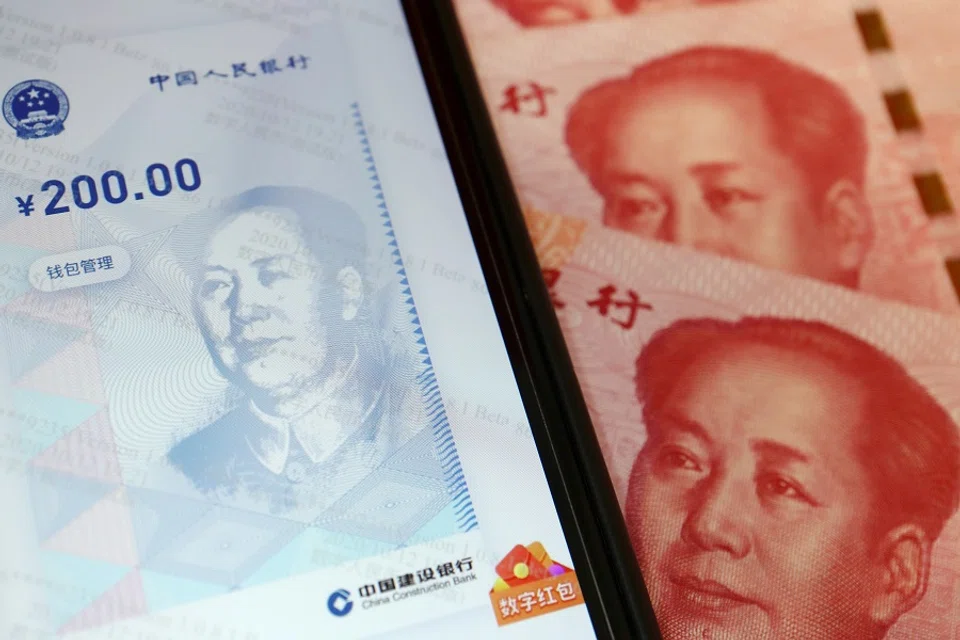China's central bank digital currency has huge potential, but be careful of overregulation

At present, the effectiveness of a central bank's monetary policy transmission is sometimes affected by time lag or less-than-ideal resource allocation. The economic entities in urgent need of development are not allocated with the required funding and hence their production capacities cannot be expanded.
On the other hand, economic entities which are in sunset industries may continue to be fed with funding and survive, or in the case of quantitative easing, excessive monies are attracted to speculate in stock markets and generate financial bubbles, instead of being deployed to fund productive activities in the real economy.
Worse still, a financial crisis may ensue, inflicting enormous pain for the society and livelihood of ordinary people, and widening wealth and social inequality.
...central banks can programme digital currency with logic so that the latter can only be spent only for a designated purpose.
Combining the advantages of traceability offered by blockchain technology and the programmability of smart contracts which would be self-enforced on blockchain, the central bank digital currencies (CBDCs) now being actively researched and developed by many countries in the world, have the technical capability to potentially optimise and vastly improve the central bank's monetary policy transmission with preset conditions to incorporate forward-looking and counter-cyclical features.
Basically, central banks can programme digital currency with logic so that the latter can only be spent on a designated purpose. Central banks can accurately control the amount, direction and intensity of liquidity or money supply flowing to the desired industries. This allows various industries to achieve an optimal level of production based on market demand and reduce the risk of inflation or deflation due to under- or over-production.
Targeted and precision monetary policy
First, based on its own circumstances and needs, an economy classifies and decides on the categories of industries it wants to develop and promote. After careful studying and planning, the CBDC will be issued in a desirable amount and then be programmed in such a way that they are designated and tagged to different industry categories.
When central banks issue the currency and commercial banks make a loan, the CBDC disbursed must correspond to the category of the economic entity receiving the loan, otherwise, it will be rendered invalid.

With such a system of classified currency issuance and credit creation, central banks can implement targeted monetary policies for different industries with different statutory reserve ratios, interest rate adjustment mechanisms, and liquidity supply mechanisms. Central banks can also preset clear forward conditions through writing computer codes into the CBDC to support or promote specific industries.
Dr Yao Qian, director of the Science and Technology Supervision Bureau of China Securities Regulatory Commission and former director of the Digital Currency Research Institute at the People's Bank of China (PBOC), in a journal paper published in March 2019, suggested that CBDCs can enhance the effectiveness of monetary policy implementation.
This can be done by programming forward conditions into CBDCs to address the issue of time lag in traditional policy transmission, to ensure funding is used as intended and government guidance on interest rate is followed, and finally to counter any economic cyclical effect. It is illustrated below in a model set up for three time periods t0, t1, and t2.
In the t0 period, a central bank sets forward conditions on the time, industry sector, loan interest rate and economic state in the design of the CBDC, and the conditions become effective after the issuance of the CBDC.
During t1, a commercial bank plans to lend money and report the loan information to the CBDC system. If the loan information meets the preset requirements for time, industry sector, and loan interest rate conditions of the central bank, the loan will be approved and the corresponding amount of CBDC will be activated.
During the t2 period, the commercial bank returns the digital currency to the central bank. If the economic situation is normal, the loan interest rate will not change. Otherwise, the loan interest rate can be automatically adjusted according to the rules set in the t0 period. For example, when the economy is overheating, the loan interest rate will become higher; when it enters a recession, the loan interest rate will become lower, effectively serving as a counter-cyclical mechanism.
The issuance method of CBDC means that the central bank must pre-determine the amount of money to be issued during the design phase of the t0 period.
A high-quality database would then be made available for reviewing and re-formulating monetary policy, such as in adjusting the amount of CBDC for various industry categories, and determining policy incentives targeted at specific industry categories.

Leveraging digital technologies, central banks can easily obtain, track and monitor historical transaction data in the entire life cycle of CBDC previously issued. They can accurately assess the speed and velocity of currency circulation, combining it with big data technology in the extensive collection of payment data of social and economic entities. They can further use this information in the analysis of consumption and investment behaviour of the private and public sectors.
A high-quality database would then be made available for reviewing and re-formulating monetary policy, such as in adjusting the amount of CBDC for various industry categories, and determining policy incentives targeted at specific industry categories.
Negative interest rate
Another advantage of CBDC is the effective implementation of the negative interest rate policy, which enriches the central bank's non-conventional monetary policy toolbox.
Under the traditional physical currency or cash system, the effective lowest interest rate central banks can adjust to is zero, because people have the option to convert deposits into cash to avoid the impact of a negative interest rate.
For large institutions, holding cash also incur storage, transportation, insurance and transaction costs, etc. Hence, to decide if one should convert deposits into cash, one would assess the loss incurred as a result of a negative deposit interest rate against the cost of holding cash. If the loss from a negative deposit interest rate is greater than the cost of holding cash, it will cause a large-scale transfer of deposits into cash.
With the CBDC replacing cash, central banks can break the zero-interest-rate limit and apply negative interest rate policy effectively by reducing interest rates as much as needed to avert a deflationary spiral.
In short, the emergence of "programmable money" will allow a more targeted, precise and transparent monetary policy of the future.
Balance between market needs and administrative intervention
The CBDC is an innovative smart currency that will help strengthen the management of market expectation, improve the efficacy of monetary policy transmission, and finally achieve "smart monetary policy" which brings about efficient resource allocation.
It is therefore important for central banks to master a full understanding of economic development and market forces to strike a good and prudent balance between market self-adjusting ability and direct administrative intervention...

On the other hand, with the ability to preset rules, programmable money also increases the central bank's power to impose more direct administrative intervention and potentially weaken the role of financial intermediaries in directing the circulation of money.
It is therefore important for central banks to master a full understanding of economic development and market forces to strike a good and prudent balance between market self-adjusting ability and direct administrative intervention, so as to avoid over-writing preconditions for money circulation and the creation of a "mechanised monetary policy".
In March 2021, China paid wages to builders using its digital RMB known as e-CNY in Xiong'an district in Hebei Province. The Xiong'an district government called this China's first "on-chain" payments used for wages, which means blockchain technology is used to keep track of and give out builders' wages. This marks China's first "blockchain plus digital RMB" application scenario.
With its leading edge in the research and development of CBDC, it should not be a surprise to see China being one of the first countries to experiment with the instituting of smart monetary policy using programmable money.
